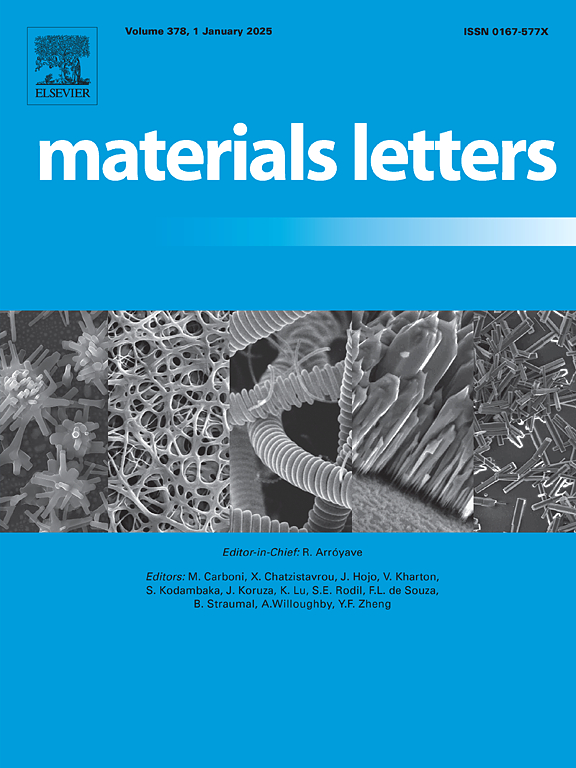利用铜纳米粒子的金属增强荧光行为对Pb2+进行荧光检测
IF 2.7
4区 材料科学
Q3 MATERIALS SCIENCE, MULTIDISCIPLINARY
引用次数: 0
摘要
从碱性水杨醛(CuQSL)中获得的铜纳米颗粒表现出很强的金属增强荧光(MEF)。荧光被H2O2有效猝灭,并通过Pb2+选择性恢复。在LOD (1.51 × 10-6 M;检测线性范围为10- 5m ~ 10- 8m)。采用水杨醛(SL)作为还原剂和封盖剂,稳定形成Cu0纳米颗粒。l(酚酸盐形式)被氧化为醌,而Cu2+被还原为Cu0纳米粒子,荧光增强,这是由于避雷针效应。Pb2+进一步将其还原为Cu0,恢复了MEF。因此,CuQSL + H2O2是检测Pb2+的有效平台。本文章由计算机程序翻译,如有差异,请以英文原文为准。
Fluorometric detection of Pb2+ with the manipulation of metal-enhanced fluorescence behaviour of copper nanoparticles
Copper nanoparticles obtained from alkaline salicylaldehyde (CuQSL) exhibited strong metal-enhanced fluorescence (MEF). Fluorescence was efficiently quenched with H2O2 and restored via Pb2+ selectively. Selective Pb2+ sensing was made possible with LOD (1.51 × 10-6 M; detection of linear range 10-5 M – 10-8 M). Salicylaldehyde (SL) was used as a reducing and capping agent to stabilize and form Cu0 nanoparticles. The SL (phenolate form) was oxidized to its quinone, while Cu2+ was reduced to Cu0 nanoparticles with enhanced fluorescence, attributed to the lightning rod effect· H2O2-based quenching was due to the oxidation of Cu0 particles. Pb2+ further reduced it to Cu0, restoring MEF. Thus, CuQSL + H2O2 was found to be an efficient platform for Pb2+ detection.
求助全文
通过发布文献求助,成功后即可免费获取论文全文。
去求助
来源期刊

Materials Letters
工程技术-材料科学:综合
CiteScore
5.60
自引率
3.30%
发文量
1948
审稿时长
50 days
期刊介绍:
Materials Letters has an open access mirror journal Materials Letters: X, sharing the same aims and scope, editorial team, submission system and rigorous peer review.
Materials Letters is dedicated to publishing novel, cutting edge reports of broad interest to the materials community. The journal provides a forum for materials scientists and engineers, physicists, and chemists to rapidly communicate on the most important topics in the field of materials.
Contributions include, but are not limited to, a variety of topics such as:
• Materials - Metals and alloys, amorphous solids, ceramics, composites, polymers, semiconductors
• Applications - Structural, opto-electronic, magnetic, medical, MEMS, sensors, smart
• Characterization - Analytical, microscopy, scanning probes, nanoscopic, optical, electrical, magnetic, acoustic, spectroscopic, diffraction
• Novel Materials - Micro and nanostructures (nanowires, nanotubes, nanoparticles), nanocomposites, thin films, superlattices, quantum dots.
• Processing - Crystal growth, thin film processing, sol-gel processing, mechanical processing, assembly, nanocrystalline processing.
• Properties - Mechanical, magnetic, optical, electrical, ferroelectric, thermal, interfacial, transport, thermodynamic
• Synthesis - Quenching, solid state, solidification, solution synthesis, vapor deposition, high pressure, explosive
 求助内容:
求助内容: 应助结果提醒方式:
应助结果提醒方式:


